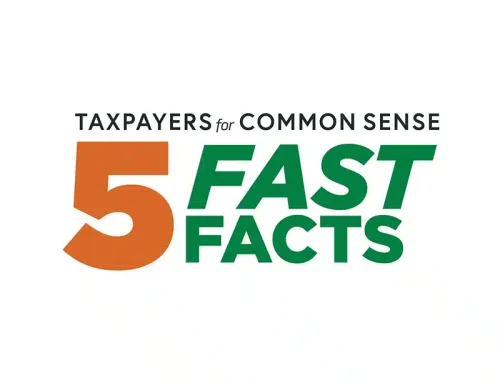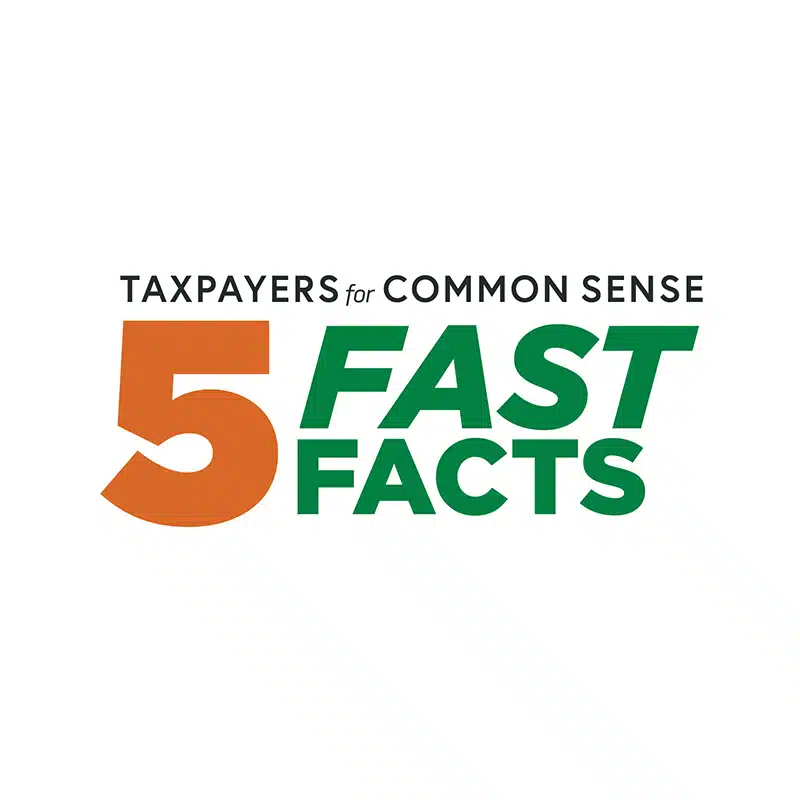Ms. Ryan Alexander
President Taxpayers for Common Sense Written Testimony submitted to the United States House of Representatives Committee on Natural Resources Hearing:
“State Perspectives on Offshore Revenue Sharing”
July 27, 2011
Good morning Chairman Hastings, Ranking Member Markey and distinguished members of the committee. Thank you for the opportunity to testify today. My name is Ryan Alexander and I am President of Taxpayers for Common Sense (TCS), a national, non-partisan budget watchdog organization. Taxpayers for Common Sense’s mission is to achieve a government that spends taxpayer dollars responsibly and operates within its means. Over the last fifteen years, TCS has actively worked to ensure that taxpayers receive a fair return on resources extracted from federal lands and waters. Royalties and fees collected from resource development represent a valuable source of income for the federal government and should be managed and accounted for in a fair and accurate manner. As the rightful owners, taxpayers have the right to fair market compensation for the resources extracted from our lands and waters, as would any private landowner. Taxpayers for Common Sense is opposed to any legislative measure that would alter the existing federal-state revenue sharing provisions for royalty payments. For many reasons that I will explain, this is an irresponsible action. However, in the face of a burgeoning federal debt crisis, siphoning billions of dollars in valuable revenue from the general treasury is downright foolish. Furthermore, altering these shares would do nothing for the bottom line of the oil and gas, wind, or other offshore developers—they would owe the same royalties, rents and fees at the end of the day either to the states or to the federal government. As you know, oil and gas companies that drill on federal and Indian lands or offshore pay royalties for the oil, gas, and other minerals they remove. Generally, this payment is a percentage of the total value of the minerals extracted. More recently other energy resources, such as wind, are also being leased on federal lands and waters and royalties paid to federal taxpayers.
Federal waters are administered, protected, and managed by federal – not state – agencies at a cost to federal taxpayers, and the revenue derived from sale of these resources should be returned to the federal treasury. Unlike onshore energy operations, offshore energy operations do not occur in a state and the impact for operations beyond state waters reaches well beyond any one state and has national implications.
History of Offshore Energy Production and Royalties
In the early 20th century oil and gas operators successfully extracted oil and gas from underneath our nation’s waters. The first successful underwater well was just offshore near Santa Barbara, California. Oil was extracted there through the creation of a long pier—using this method operations were never much further than a 1,000 feet off the shore. But by the late 1940s oil and gas development had moved to offshore platforms.
From its beginning, offshore revenues were an important source of federal dollars. Shortly after the success of the first barge and platform system, roughly 10.5 miles from the Louisiana coast and operated by Kerr-McGee, the offshore oil and gas industry experienced rapid growth.
By the 1950s production was rising so high that offshore operations became a significant revenue generator for the country. Disputes over water rights and leasing became a problem and the Outer Continental Shelf Lands Act (OCSLA) of 1953 was enacted to manage the operations beyond state waters.
The federal government was also charged with collecting royalties for extracted resources from publically owned lands and waters. This responsibility fell to the Department of the Interior (DOI). After there were problems with fiscal accountability of resource operations, President Reagan created the Linowes Commission to review the process and investigate the underpayment of royalties. Shortly thereafter the Minerals Management Service was created within DOI to manage offshore operations and collect royalties. From 1982- 2010 the Minerals Management Service oversaw offshore energy production and collected and distributed royalties for minerals extracted from federal and tribal lands and waters.
Federal Waters are Federally Managed and Taxpayer Funded
Formerly the responsibility of the Minerals Management Service, the recovery of royalties for resource development in federal waters now falls to the newly created Office of Natural Resource Revenue (ONRR) housed within the Secretary’s office in the Department of the Interior. ONRR is responsible for royalties due on conventional and renewable ocean energy and mineral resources on 1.7 billion acres of the U.S. Outer Continental Shelf (OCS) as well as onshore federal and Indian lands. This new agency is charged with ensuring fair collection, calculation, and distribution of royalties on behalf of the American taxpayer. Revenues from the collection of royalties represent one of the largest non-tax income sources for the federal government. The majority of this revenue comes from offshore natural gas production—approximately 60% of royalty revenue comes from natural gas. The ONRR collects nearly $10 billion in revenues annually in royalties, rents, bonuses and fees from resource extraction on federal lands and waters. In fiscal year 2010, more than $3.8 billion in these revenues came from resource development in federal waters offshore. In addition to directing money to the federal treasury, under federal law ONRR also distributes this money to states, American Indian Tribes, Land and Water Conservation Fund, the Reclamation Fund and the Historic Preservation Fund.
Offshore energy development is not managed by ONRR alone. Although originally tasked fully to MMS, in the recently created system, safety and environmental regulations on offshore development are carried out by the Bureau of Ocean Energy Management, Regulation and Enforcement (BOEMRE).
Substantial federal funds are directed to both the ONRR and the BOEMRE annually. In fact, this week the House is considering the Department of the Interior, Environment, and Related Agencies Appropriations Act for fiscal year 2012, which provides funding for both the ONRR and BOEMRE. This year’s Interior bill includes an appropriation of $138,605,000 for ocean energy management under BOEMRE. It also provides $109,364,000 for royalty management to the Office of the Secretary for the ONRR.
Finally, on top of the costs that fall to the federal taxpayer for BOEMRE and the ONRR, the U.S. Coast Guard, not the states, inspects and regulates the off-shore drilling rigs as well as performs vessel regulation, search and rescue, security and pollution response.
Coastal States Royalties from Offshore Drilling
To be clear, states get the money from waters dedicated to the states under federal law. All Americans get the revenue from federal waters. These waters are more than six miles from the coast, and nine miles in parts of the Gulf of Mexico. State waters are within three miles of their respective shoreline.
The coastal states where offshore drilling takes place already receive significant revenue from royalty payments. States receive all the revenue generated within three miles of their shoreline. Additionally, under section 8(g) of the Outer Continental Shelf Lands Act, states receive 27% of royalty payments for development in waters within three to six miles of their coasts – about a quarter billion dollars in FY2010. For the remaining exclusive economic zone – out to 200 miles – the royalty revenue is returned to the rightful resource owner, the federal taxpayer.
Additionally, states benefit from offshore operations in direct and indirect jobs such as service operations supporting offshore development, and more directly affiliated jobs such as commercial industries in gas processing and oil refining. Without directing the royalty payments to the states from federal waters there is still benefit to coastal states that pursue offshore drilling.
Gulf of Mexico Energy Security Act Already Siphons Taxpayer Dollars
Federal taxpayers have already lost significant income from federal resources in the Gulf of Mexico. The Gulf of Mexico Energy Security Act (GOMESA) in 2006 gave the Gulf states an even larger share of federal revenues. They receive 37.5% of the royalty income from certain newly opened areas in federal waters of the Gulf, and beginning in 2016 they will receive 37.5% of royalties from new leases throughout the Gulf’s federal waters, up to $500 million annually.
GOMESA’s large payments to the Gulf states were justified as mitigation for damage to Gulf coastal wetlands and environment due to past impacts of oil and gas development. In fact, the law restricts the states to use the money only for a range of purposes affecting these coastal areas, in order to meet a specific federal purpose for coastal wetland restoration. Whether or not this is a reasonable expenditure of federal money, it is directed at addressing a kind of damage that modern coastal and wetlands regulation should prevent. Revenues from any increase in oil and gas development off other states will not need to be directed to such mitigating for past harms, and there is no justification for simply giving the states a blank check from the taxpayers’ money.
Directing Royalties to States in Federal Waters Poses an Enormous Political and Logistical Challenge
Beyond the limited state waters designated in federal law (extending 3 to 6 miles from shore), there are simply no state boundaries in federal waters. Drawing boundaries for states and determining the recipient for the increased state revenues for waters so far offshore would be a legal and technical nightmare. The division of revenue among the states in the GOMESA legislation represented a political compromise that would be indefinitely more complicated along other U.S. coasts.
For example, states with concave or convex of the coastlines may have difficulty determining boundaries or agreeing on where their state’s interests lie. The proposal for leasing wind offshore Rhode Island and Massachusetts was delayed nearly a year by negotiations between the states.
Offshore Drilling in Federal Waters is Important Revenue
At a time when the country faces a $14 trillion debt discussing the prospects of diverting federal royalties to the states would only put more financial stress on the already pressed federal coffers. It is clear the federal government needs this valuable source of revenue that is rightfully due to all Americans now more than ever. As required by the 2005 Energy Bill, in 2006 the DOI completed an inventory of existing oil and gas offshore reserves. They estimated 8.5 billion barrels of oil and 29.3 trillion cubic feet (tcf) of natural gas. Nearly all of this lies in federal waters-siphoning this money to a few states could cost taxpayers billions annually in rightfully owed revenue.
Federal Waters Belong to All U.S. Taxpayers
Royalties collected from offshore drilling in federal waters should be returned to the rightful resource owner the federal taxpayer. States receive revenue from royalties collected within state waters and the transitional area between state and federal waters (3-6 miles from shore). Furthermore, the federal government manages and secures operations off our coasts and the taxpayer bears the cost of these services. The impacts of drilling in federal waters have national implications. Costs and benefits should be carried out in the interest of all Americans, not a handful of coastal states.
The country is now facing a $14 trillion debt and an annual deficit of more than $1 trillion dollars. Many things need to be done to resolve the nation’s fiscal woes. Not the least of which is ensuring federal taxpayers get the revenue they deserve for the resources they own.











Get Social